I may get commissions for purchases made through links in this post.
Most of us middle-classers have daydreamed at least once about striking it rich, either with a lottery ticket, a lucky break in our careers, or a large inheritance from a mysterious distant uncle. We imagine the sensational things we would do and the thrilling and exotic places we’d go if money were no object.
We flip through magazine pages filled with affluent celebrities dripping in diamonds, clad in high fashion clothes, clutching the keys to a new Lamborghini Veneno Roadster (named the Most Expensive Car of 2014).
We yearn for that lavish lifestyle while, quite conversely, some of the world’s richest people have gone to great (and often strange) lengths to save a dollar here and there, even though they have millions, even billions in the bank.
One of the most well-known examples of billionaires living below their means is Apple founder Steve Jobs, who famously refused to buy a coat while visiting Manhattan during a cold spell, while stepping outside in the cold again declaring to his friend Ben Rosen, “that much for an overcoat? Too much. Besides, I’ll never use it in California.”
Below are fourteen more examples of the world’s wealthiest and most frugal. Persons known for their extreme, catching or intriguing austerity, from yesterday and today. Some of these people, celebrities engaging in miserly behavior that would embarrass Ebenezer Scrooge.
The Frugality Hall of Fame, Top 5 Most Interesting Frugal People
Benjamin Franklin
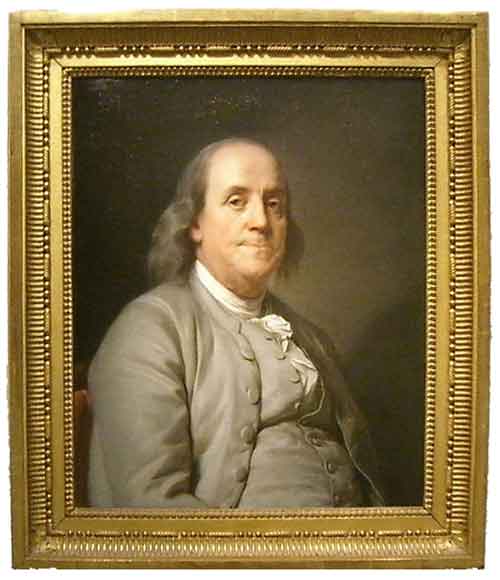
Founding Father, inventor, and entrepreneur, Ben Franklin is heralded in the U.S. as the “Father of Frugality”. The youngest of fifteen children, Franklin grew up knowing the value of a dollar and wrote entire books on the subject of saving and spending money wisely, which are still considered relevant even in today’s economic society.
Franklin coined such phrases as “a penny saved is a penny earned” and “early to bed, early to rise, makes a mean healthy, wealthy, and wise”. He and his wife, Deborah Read, took these idioms to heart by eating small, simple meals every day and dressing in plain fashions, while other aristocrats of the Colonies were spending their newly-acquired wealth on great feasts and trendy, luxurious clothing.
Franklin also made sure to surround himself with co-workers, partners, and friends who all shared in his enthusiasm for living below their means, so as not to succumb to spendthrift behavior. These methods led Franklin to become a self-made millionaire by the time he was 42, and earned him a place of esteem in American history (not to mention a portrait on the $100 bill!)
John D. MacArthur
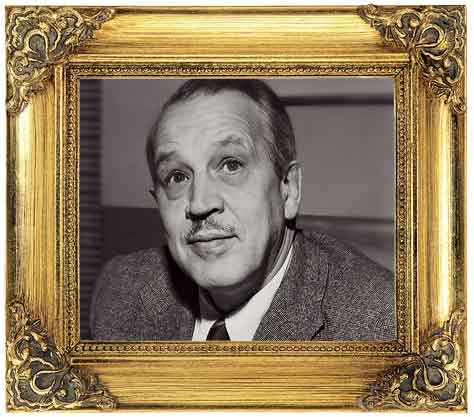
MacArthur was an American businessman who built an insurance empire and amassed a fortune of over $1 billion by the time of his death in 1978. (That’s almost $4 billion in today’s money.) He grew up in a poor Pennsylvania mining town along with his six siblings, so one can imagine the money saving tips and tricks he grew up learning from his resourceful parents.
One such method was combining his home and workspace throughout the beginning of his career. MacArthur managed his insurance business out of the Colonnades Beach, a hotel he owned, taking meetings with clients and investors in the hotel’s coffee shop. He and his family also lived in a modest apartment above the bar of the hotel, saving money on both his home and his office spaces by eliminating the need for a home mortgage or office lease.
And while he could certainly have afforded luxury accommodations and high-end items, he shunned designer brands in favor for inexpensive substitutes, In an interview in 1976, MacArthur proudly declared, “fancy labels don’t mean a damn to me. If I can get better value on a diamond at a pawnshop, I’d sooner get it there than at Tiffany’s.” Thus MacArthur never owned a yacht or luxury car, and allowed himself a sum of $25,000 a year to live on, while the rest went to charity and savings.
Hetty Green
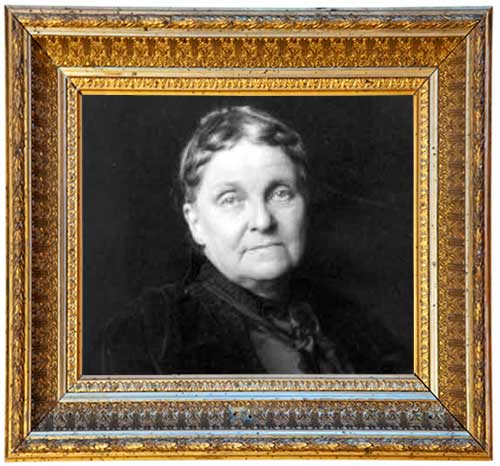
Henrietta “Hetty” Green was businesswoman and the wealthiest woman in America in the 1870s. Born to a family of rich Quakers, Hetty adopted much of her frugal lifestyle from her faith and upbringing.
Although she was born wealthy, she was such a conservative spender that the Guinness Book of World Records gave her the title of World’s Greatest Miser, an “honor” she held for much of her life.This led also to nicknames as The Queen of Wall Street, The Human Cash Register, and The Pride and Pain of Bellows Falls.
Hetty used a variety of methods to save money, some of which were so extreme that her contemporaries referred to her as “The Witch of Wall Street.” She never used heated water for her baths or used a heating system in her home, even in the dead of a New York winter. She had only one plain black dress that she would wear every day until the fabric wore out, and only had it washed in small, specific areas to save on soap.
Her meals mostly consisted of hand pies that cost 15 cents each. In one particularly gruesome instance, when Hetty’s young son Ned broke his leg, she initially took him to a free clinic reserved for the poor, to avoid costly doctor’s fees. This miserly misstep caused poor Ned to eventually have his leg amputated. Even Hetty refused a surgical procedure for her own health before she died in 1916, because of the $150 price tag that came with it.
Rose F. Kennedy
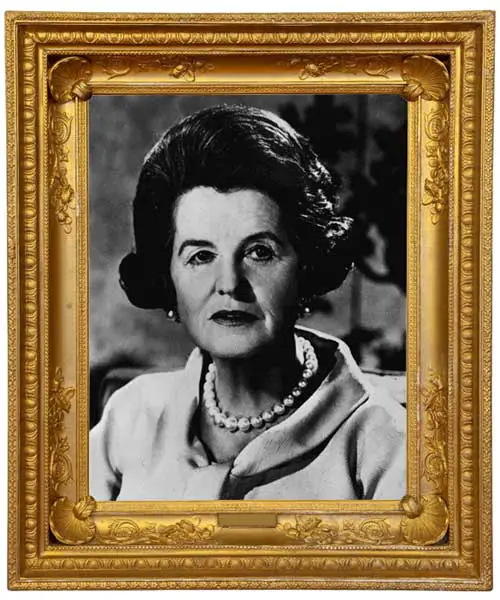
Rose Kennedy raised nine children to be US Senators, ambassadors, and even a president, so it’s no surprise that her acts of frugality during her long life usually go unnoticed. When Barbara Gibson, Kennedy’s secretary from 1974 to 1977, published a tell-all book about life with America’s most famous political family, she included many details of Rose’s excessive penny-pinching.
When Gibson ordered a business lunch which included a 59 cent bag of potato chips, Kennedy forced her to remove the item, complaining about its outrageous price. Before she married Joe Kennedy in 1914, she often swapped her old clothes with a friend who was the same dress size, so that they both could have brand new wardrobes without paying a dime.
This kind of smart saving and small spending allowed Rose to save the Kennedy compound from financial ruin several times over the course of her life, and is the reason for her accomplishments in motherhood and in her many charitable endeavors.
Ronald Read
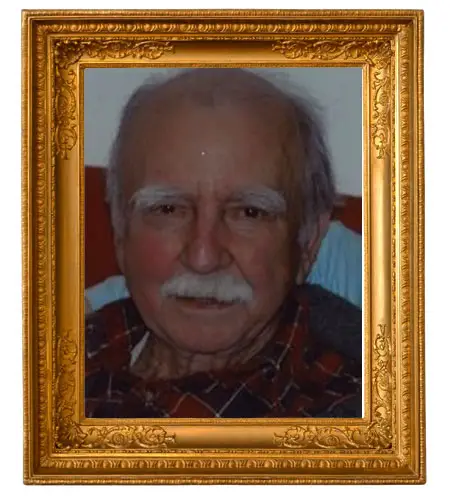
Ronald Read is more of a local legend, especially to the town of Battleboro, Vermont. An unassuming man, Read was the first in his family to finish high school, and worked as a gas station attendant and a janitor until his retirement at age 75. He was so frugal, he drove a second-hand car, gathered his own firewood, and used safety pins to keep his coat closed when the buttons fell off.
His appearance and demeanor was so shabby that one time, while having lunch at a local coffee shop, a stranger anonymously paid for his meal, assuming Read was down on his luck and couldn’t afford it. Even his attorney, Laurie Rowell, admitted to the press that the last time she had a meeting with Read, “he parked far away in a spot where there were no meters so he could save the coins.”
However, when he died at 92 in June of 2014, he posthumously revealed himself to be a multimillionaire, having amassed more than $8 million by successfully playing the stock market and investing wisely. His own family was unaware of his wealth, stating that their only clue that he was accumulating vast riches was the fact that he read the Wall Street Journal religiously. His stock market savvy and simple spending habits paid off, and upon his death he was generous enough to donate approximately $6 million to his local hospital and library.
Honorable Mentions, 9 Intriguing Frugal and Famous People
Carlos Slim Helu
This Mexican mogul surpassed Bill Gates as the World’s Richest Man in 2010, with a net worth of over $69 billion in tow. Helu is the owner of over 200 companies in Mexico, including the country’s largest telephone operating company Telmex. Yet, much like Gates, Carlos prefers a simple life, free of extravagance.
He still resides in a modest home where he and his family have lived for over three decades and drives himself to work every day, rather than use a chauffeur, and does not employ a security staff, even though the rate of kidnappings in Mexico is the highest on record. He refuses to buy computers and other technology because of the price and the distraction.
And even though he owns many retail franchises and can easily request that they send him top-quality fashions, he prefers to buy them off the discount rack himself. In his free time, Helu enjoys staying at home with his children and grandchildren, making memories rather than spending money.
Mark Zuckerberg
You would think that a 27-year-old man with an estimated worth of $6.9 billion (yes, BILLION) would be spending his time and money jetsetting around the world, buying huge, lavish mansions, and being photographed by paparazzi on remote islands with Victoria’s Secret models. Well, for Facebook founder Mark Zuckerberg, his life couldn’t be more opposite.
While Zuckerberg does live in a 5,600-square-foot home in Paolo Alto, CA. worth $7 million, it’s clearly a drop in the bucket, and a modest abode compared to others in the area. Zuckerberg preaches the virtues of “minimalism” and “eliminating desire” on his own Facebook page, and has lived by those virtues even while he was attending college and creating the internet’s most influential social media platform.
Zuckerberg resided in dorms while attending Harvard University, and lived off cheap meals like ramen and macaroni. He rented small, one-bedroom apartments after he dropped out of school to launch Facebook, and to this day he drives a modest Acura (because of its reputation for safety, he claims) and dresses in a simple, yet now iconic gray hooded sweatshirt. These conservative habits will ensure that Zuckerberg is prepared to leave a rich, positive legacy for himself and his family.
David Cheriton
Canadian-born David Cheriton is a technology investor and a professor at Stanford University. He was one of the first people to put up investment capital for Larry Page and Sergey Brin in order for them to launch Google. Cheriton’s initial investment of $100 thousand yielded him a return of over $1.1 billion, and today he is estimated to have a net worth of over $3.3 billion.
But although he is ranked as the 13th richest Canadian, he insists on living a frugal lifestyle and despises spending his money needlessly like many other billionaires do. During an interview, he admitted “I’m actually quite offended by that sort of thing…these people who build houses with 13 bathrooms and so on, there’s something wrong with them.”
Instead, Cheriton drives a 1896 Volkswagen, resides in the same home he has owned for over thirty years, and even cuts his own hair. In 2010, Business Insider named Cheriton among the top ten “Cheapskate Billionaires”. While Cheriton may be a cheapskate when it comes to homes and cars, he has given large sums of money as charitable donations to Canadian colleges such as the University of Waterloo and the University of British Columbia, who used the money to fund graduate studies and research in the field of computer science.
Michael Bloomberg
Communications mogul and former Mayor of New York City, Michael Bloomberg has had to reveal some shocking acts of tightwad-ness in the past. After announcing his candidacy in 2001, released his financial records as required by law. These documents showed that while his company, Bloomberg L.P., was worth over $22 billion dollars, Bloomberg only gave himself an annual salary that was equal to the lowest-paid worker at his company.
That salary ranged anywhere from $5,000 to less than $20,000 per year from 1997 to 2000. But how did the mayoral candidate survive on such a paltry sum? For starters, Bloomberg only owned two pairs of dress shoes in a span of ten years, which he alternated in order to extend their mileage. These two pairs of shoes, one a penny loafer and the other a loafer with a tassel, predated his term as mayor, and his spokesman is quoted as saying “both are so well worn, with labels so long gone.”
Not only was he was frugal with footwear, he was also cautious about shelling out money for fancy, hard-to-pronounce coffee. Members of his staff claim that Bloomberg purposefully selected the smallest size of regular coffee available, so that he wouldn’t spend a lot and also so it wouldn’t go to waste.
Zong Qinghou
Qinghou is hailed as the richest man in China, and ranked #13 richest man in the world. Although he’s resting on a cool $21.6 billion, he earns the distinction of being China’s most frugal citizen as well. Sources say that the 66-year-old founder of the Wahaha soft drink company, who once scraped by as a shopkeep before launching his business, lives on only $20 dollars a day, and doesn’t spend more than $2 on his clothes and shoes.
When asked in an interview why he invests so little into his wardrobe, Qinghou replied “People cannot tell if I were wearing clothes worth [$160] or [$16], so why would I want to spend money on them?” His workers have also commented on his eating habits, shunning fine dining in favor of pickled vegetables and tofu, and preferring to eat in his company’s cafeteria with the people who work for him. He has credited the success of his international beverage business to these simplified spending habits, saying “focusing on doing one thing and doing it properly is the simplest but also the most difficult thing.”
Ingvar Kamprad
It’s actually not surprising to learn that the man who invented the simple, unadorned designs of the famous IKEA furniture brand dedicates his life to simplicity and cost-cutting, even with a fortune of over $4 billion. Ingvar Kamprad lives in a small bungalow in Sweden, shops at local grocery stores around closing time to take advantage of end-of-day sales, and flies economy class even though he’s wealthy enough to afford his own private plane.
Kamprad is notorious for his spending habits, going so far as to eat his own company’s famous Swedish meatballs for lunch. People close to him have reported that he frequently swipes salt and pepper packets from restaurants, recycles his tea bags, and buys wrapping paper and other Christmas trappings during after-holiday sales.
On one occasion, Kamprad was denied entry into a business awards ceremony because he had just gotten off a bus in front of the venue. His thriftiness works for his life and his business model, and in his manifesto A Testament of a Furniture Dealer, he claims “[w]e don’t need flashy cars, impressive titles, uniforms or other status symbols. We rely on our strength and our will!”
Warren Buffett
Despite being the CEO of the multinational conglomerate holding company Berkshire Hathaway, and a man whose name appears on countless lists documenting the world’s richest businessmen, Warren Buffett and his legendary frugality is not only a hot topic in trade gossip, it’s a standard of living that he has used as a teaching tool to a wide audience, from fellow top businessmen, to young children. As of Janurary 2015 Buffett’s net worth was estimated at over $73 billion, and yet he lives off a salary of $100,000, an amount which he has not changed in the last 25 years despite inflation.
Being a man of simple tastes, his salary is more than enough to support his thrifty lifestyle. Not only does he eschew the idea of dropping large sums of money on cars, houses, and other rich-man status symbols, saying that “[m]ost toys are just a pain in the neck.” He refuses to upgrade his cell phone and computer as well, claiming that as long as they work fine, there’s no need to replace them.
When he married his second wife Astrid Menks, rather than splurge on inviting a mile-long list of celebrities to an excessively grand event at a trendy and expensive venue like the Four Seasons, Buffett chose instead to tie the knot at a private ceremony at his daughter Susan’s house, which lasted all of 15 minutes. It’s this mindfulness of money that will help keep Warren Buffett’s name on the higher end of all those “Richest People Alive” lists.
Kiera Knightley
Pop culture media outlets are constantly publishing stories of young celebrities and their outrageous spending habits. Shows like MTV Cribs and the very popular Lifestyles of the Rich and Famous, along with celebrity gossip magazines like People and OK! give normal viewers a glimpse into the champagne wishes and caviar dreams of Hollywood’s elite.
Excess is expected among young actors and actresses, so it’s almost a shock to find out that a handful of celebrities are clipping coupons and growing their savings accounts just like the rest of the 99%. One of the best examples is Kiera Knightley, who, despite a net worth of about $50 million, limits her day-to-day spending to $50,000 a year.
The actress, best known as the leading lady in the Pirates of the Caribbean movie franchise, applied her frugal ways to her 2013 wedding to musician James Righton. The pair had a courthouse wedding in the South of France, with only 50 guests at the reception. For a wedding dress, Knightley declined to spend a fortune on a gown from famous fashion houses like Vera Wang or Carolina Herrera, and instead wore a dress that she had owned for years.
Vincent Karthesier
When the AMC drama Mad Men became an overnight smash, Vincent Karthesier, who plays Pete Campbell, soon realized that he craved minimalism in his life after boxes upon boxes of free gifts and swag started showing up at his door. “One day, I looked around and thought ‘I don’t want this stuff, I didn’t ask for it’,” he once told The Guardian. “So I started giving it to friends or charity stores, or if it is still in its box I might sell it for a hundred bucks.”
But he didn’t stop there. He also gave up a car in favor of public transportation to get around Los Angeles, and until a few years ago, he lived in a 603-square-foot home with no television, no mirrors, and no working bathroom. (Okay, that was just temporary while he was renovating the home, but still.)
While other actors his age are spending money like it’s going out of style, Karthesier, who’s estimated to be worth $1.1 and growing, knows the fleeting nature of show business, and thinks about the future in all of his purchases. “Mad Men is going to be over at some point and my career will slow down, and I have to be prepared,” he said, “So I have to be a little bit financially conservative when it comes to certain things.”
Although frugality may not be a very high priority for most of the world’s rich, it’s nice to know that fame and fortune doesn’t always affect people negatively. Even with billions of dollars at their disposal, some of the wealthiest people in the world choose to downgrade their possessions and minimize their personal spending in order to provide their families with a bright future, help those less fortunate, and donate to worthy causes. As the old saying goes, “you can’t take it with you.”
By Leslie C.
Image credits, Photo Benjamin Franklin: Jay Cross , John D. Mac Arthur AEI.org, Frame, Pixabay, Hetty Green Wikimedia Commons. ,Rose Kennedy Wikimedia Commons.




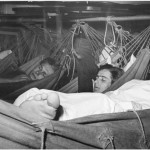




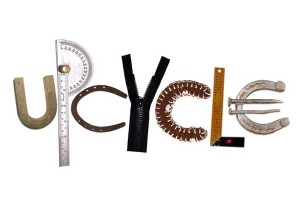




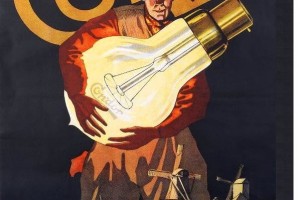






absolutely ‘loved’ this post…how utterly inspiring! This ones a keeper
Very interesting post. I hear Indian Billionaire Azim Premji is quite a scrooge as well and has now pledged to donate most of this wealth to charitable causes.
The article does reaffirm faith in humanity.
only needed this for a school project
not all is true tho: https://time.com/2993849/keira-knightley-50000-a-year/